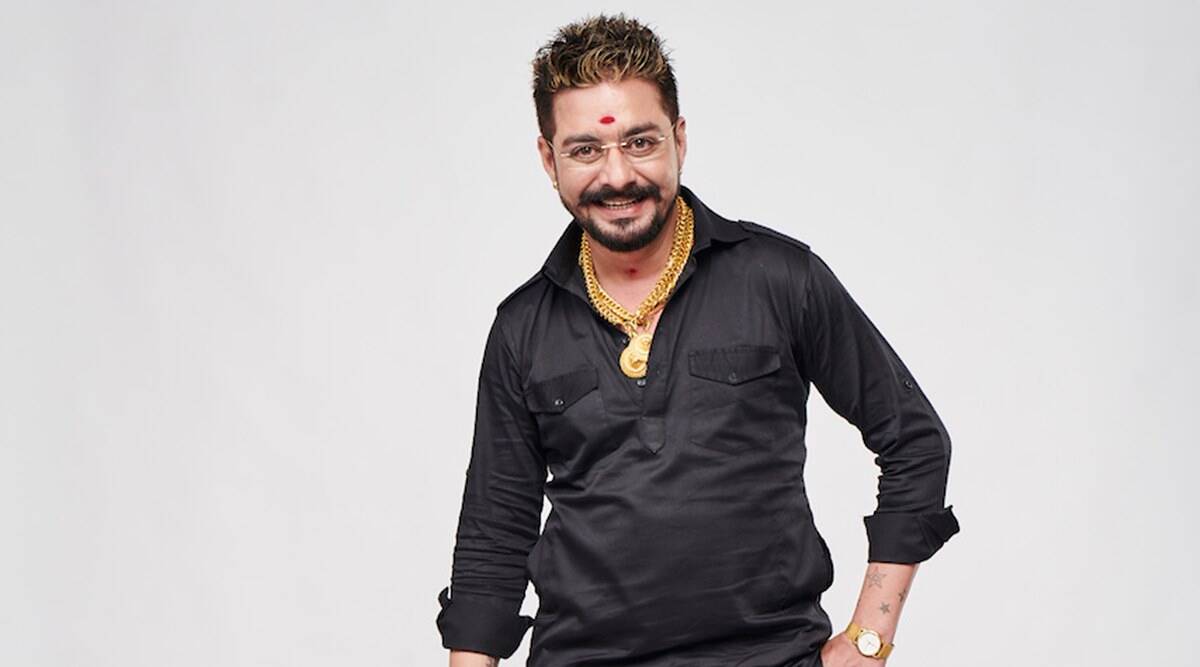 Hindustani Bhau, who participated in reality TV show "Bigg Boss 13", is popular for his videos that are marked by the unique delivery of slang words. (File Photo)
Hindustani Bhau, who participated in reality TV show "Bigg Boss 13", is popular for his videos that are marked by the unique delivery of slang words. (File Photo) The Dharavi police on Tuesday arrested YouTuber Vikas Fhatak (41) aka ‘Hindustani Bhau’ in connection with role in orchestrating the riots in Dharavi where over 1,000 students, mostly minors, choked the roads and took to violence on Monday demanding the cancellation of offline board exams for Class 10 and 12 in view of the pandemic.
A meeting has been called by state School Education Minister Varsha Gaikwad to discuss the topic with officials and students on Tuesday.
Fhatak, a resident of Khar danda in Khar (West), and his aide Ikrar Khan (25) were arrested and will be produced before a magistrate court in Bandra.
The call for protest was given by Fhatak, a social media influencer who allegedly makes abusive videos. On January 29, he had uploaded a video on Instagram asking students to “peacefully protest” with him against the government’s decision in Dharavi outside the residence of Gaikwad.
He also appealed to students across Maharashtra to visit education offices in their region with the same demand. The videos are available on his social media handle.
Following this, around 1,000 to 1,500 students gathered outside the minister’s residence between 12 pm to 4 pm on Monday. The police said the crowd swelled around 3 pm, when many students from far-off places like Thane, Kalyan, Badlapur, Vasai, Virar and places in Navi Mumbai reached the spot.
The protests took a violent turn in Mumbai and Nagpur with some students damaging private and police vehicles by pelting stones. While the protests in Jalgaon and Aurangabad remained peaceful, in Mumbai and Nagpur, the local police had to resort to lathi-charge to disperse the mob.
A police officer from Dharavi said, “Around 100 to 150 police personnel were at the spot to disperse the crowd. An SRPF team was also brought in. Private and police vehicles were damaged. The students were throwing paver blocks. Hindustani Bhau had to be escorted from the spot as a lot of crowd had gathered around him… arresting him would have created more issues.”
An FIR has been registered against Fhatak and several others under IPC sections 353 (obstructing public servant from discharging duty),332 (causing hurt to public servant), 427 (mischief causing damage), 109 (abetment) and 114 (abettor present when offence committed), 143, 145, 146, 149 for unlawful assembly and rioting and 188, 269, 270 for violating Covid-19 guidelines. The police have also booked them under section 3 (mischief causing damage) of Prevention of Damage to Public Property act 1984.
Divisional Assistant Commissioner of Police Suresh Jadhav told The Indian Express, “Only some students in the crowd acted like goons and took to violence. They broke the glasses of a few private vehicles and one police van.”
As they gathered near Gaikwad’s residence, the students were heard shouting slogans demanding justice. The students said they were not prepared to appear for the board exams that are due to begin in March. While their primary demand was to cancel the exam, the protesters added that if the exam had to be held, it should be online.
“Until and unless the pandemic is over, there should not be exams. Many students have already lost their lives due to depression. Due to online classes, many have lost out on academics without adequate access. The government should cancel the exam considering the physical and mental health of these students. Otherwise, hold an online exam, just as the studies were done online,” Fhatak had said in one of his videos.
A traffic police official said, “There were around 1,000 to 1,500 students. They choked the Sant Rohidas Marg in Dharavi near Sion railway station and we had to divert the traffic on that road for around two hours. The traffic was moving slowly due to the protest.”
Nearly 200-odd students also protested at Ajni in Nagpur. The students blocked the road and damaged a private bus by pelting stones.
The state government has ordered an inquiry into the protests.
- The Indian Express website has been rated GREEN for its credibility and trustworthiness by Newsguard, a global service that rates news sources for their journalistic standards.

